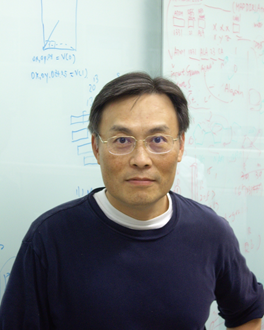Albert Theuwissen
Albert Theuwissen received the degree in electrical engineering and his PhD from the Catholic University of Leuven (Belgium) in 1977 and 1983 respectively. In 1983 he joined Philips Research Labs (the Netherlands) and in 2002 he started working for DALSA. His whole career he was involved in R&D of solid-state image sensors.
He issued several patents and he is author or coauthor of 240+ technical papers, including a textbook "SolidState Imaging with ChargeCoupled Devices". He acted as general chairman of the International Image Sensor Workshop in ’97, ’03, ‘09 and in ’15, and as International Technical Program Chair of the ISSCC2010.
In 2001, he became part-time professor at the Delft University of Technology, the Netherlands. He left DALSA in 2007, and founded Harvest Imaging. Since then he is fully focusing on training, teaching and consulting in the field of solid-state imaging technology.
In 2011 he received the Electronic Imaging of the Year Award and in 2017 he was elected as the President of the International Image Sensor Society.
Abstract:
DEEP-TRENCH ISOLATION : THE HOLY GRAIL FOR IMAGE SENSORS ?
For many years, pixel size shrinkage was the main R&D focus in the field of CMOS image sensors (CIS). The innovations have been mainly driven by the mobile phone industry. However, a pixel size of 1 um seemed to be the lower limit of what could be mass-fabricated in a CMOS image sensor process, maintaining a low cost and maintaining a decent performance. Recently Deep Trench Isolation (DTI) was introduced in the CIS production process. This opened a completely new horizon for smaller pixels and/or higher performance pixels, without sacrificing performance. Pixel shrinkage re-continued and 0.5 um seems to become the new target.
An overview will be given of the DTI developments needed to implement this technology in CIS without creating negative effects on the pixel performance (optical effects, electrical effects, leakage current, etc). But now that the DTI technology is made CIS compatible, new dimensions and new features can be added to CMOS image sensors. Examples are wide dynamic range (for automotive and industrial applications), enhanced near-IR sensitivity (for distance measurements and security applications), vertical photodiodes (fabricated in the third dimension), image sensors stacked to a processing die, global shutter pixels, etc. The various new applications will be reviewed in the presentation, together with a future outlook of what CMOS image sensors can bring : Will the main CIS focus still be the consumer stuff ? Will the mobile phone industry remain the driving force behind CIS innovation ?
An-Suei Yang, PhD
An-Suei Yang
Brief Biography:
An-Suei Yang, Ph.D.
Education
1987 Ph.D. Chemistry, The Johns Hopkins University, Baltimore, MD.
1986 M. S. Chemistry, The Johns Hopkins University, Baltimore, MD.
1979 B. S. Chemistry, National Tsing Hua University, Taiwan.
Positions and employment
2018 - Division director of the Physical and Computational Genomics division, Genomics Research Center, Academia Sinica.
2010 - Research Fellow, Genomics Research Center, Academia Sinica.
2007 - 2016 Deputy Director, Genomics Research Center, Academia Sinica.
2004 - 2010 Associate Research Fellow, Genomics Research Center, Academia Sinica.
2000 - 2004 Assistant Professor, Department of Pharmacology and Columbia Genome Center, Columbia University
Topic: developing anti-SARS-CoV-2 nucleocapsid protein antibodies with phage-displayed synthetic antibody libraries designed with computational methods
Abstract: The SARS-CoV-2 (severe acute respiratory syndrome coronavirus 2) outbreak in late-2019 in Wuhan China has led to global COVID-19 (coronavirus infectious disease 2019) pandemic, declared by the World Health Organization in March 11, 2020. During the outbreak of infectious diseases, tests to detect infected patients are urgently needed. RT-PCR-based detection of viral genetic materials and antibody IgG and IgM responding to the pathogen infection in human blood can be deployed quickly once the pathogen’s genome sequence become known, but the downsides of these tests limit the broad deployment of the PCR-based tests, or do not provide information on the real-time contagiousness of the pathogen infection in the antibody tests. A third kind of test based on lateral flow immunoassay (LFIA) on viral antigens could provide infection information for disease treatment and prevention without additional facility and instrumentation with turnaround times of 15-20 minutes – much like existing rapid influenza diagnostic tests, and is of particular value for infectious disease outbreak control in regions of insufficient resources. The key component of the LFIA for an antigen is the capture and detection antibody pair binding the target antigen with high affinity and specificity on two distinctively separate epitopes on the antigen. Because attaining suitable antibodies could be time-consuming and labor/cost-intensive, the LFIA devices are usually the most difficult to achieve rapidly among the three kinds of tests. Facing the challenge, we generated antibodies in IgG form that recognize both SARS-CoV-2 and the original SARS-CoV nucleocapsid (N) proteins. None of the IgGs bind the N protein of other human coronavirus strains. Our group accomplished antibody discoveries in 19 days, by working with our phage-displayed synthetic antibody libraries1, which had been designed with artificial intelligence models trained on antibody-antigen interactions2, constructed with chemically synthesized DNA, and expressed and then stored with phage display systems3. The antibody discovery processes were carried out in bacterial cultures, without need for animal facilities, thus mitigating time, material and environmental costs while enabling successful development of useful monoclonal antibodies. After completing the anti-N protein IgG development, our group completed a LFIA device prototype within one month. This work establishes a technological platform for rapidly developing LFIA devices in responding not only to the current COVID-19 pandemic but also in managing other infectious disease outbreaks in humans and animals. Indeed, we applied the technological platform to develop LFIA devices for avian influenza virus antigen in 2016 (manuscript submitted) and for African swine fever virus antigen in 2019 (manuscript in preparation). Developing solutions in responding to the challenges from the COVID-19 pandemic, we have demonstrated that the phage-displayed synthetic antibody libraries designed with computational methodologies could drive innovations in treating and preventing diseases.
Eric MacDonald, PhD
Eric MacDonald, Ph.D. is a professor of mechanical engineering the University of Texas at El Paso (UTEP). Dr. MacDonald received his doctoral degree (2002) from the University of Texas at Austin and worked in industry for 12 years at IBM and Motorola. He subsequently co-founded a start-up specializing in microprocessor design, which was acquired by a firm in Silicon Valley. Dr. MacDonald held faculty fellowships at NASA’s Jet Propulsion Laboratory, US Naval Research and was awarded a US State Department Fulbright Fellowship in South America. His research interests include 3D printed multi-functional applications and process monitoring in additive manufacturing for improved quality and yield. Recent projects include 3D printing CubeSat satellites with structurally embedded electronics (one of which was launched into Low Earth Orbit in 2013 and another serving as a replica on display at the London Museum of Science). He has over 100 peer-reviewed publications and dozens of patents including one licensed by Sony.
Abstract:
Sensing in 3D Printed Multi-Functional Structures
3D printing has been historically relegated to fabricating conceptual models and prototypes; however, increasingly, research is now focusing on fabricating functional end-use products. As patents for 3D printing expire, new low-cost systems are being adopted more widely and this trend is leading to a diversity of new applications, processes and available materials. However, currently the technology is generally confined to fabricating single-material structures. For additively-manufactured products to be economically meaningful, sensing is required to be incorporated (printed directly or robotically placed) to provide electronic, electromechanical, electromagnetic, thermodynamic, chemical and optical content. By interrupting the 3D printing and employing complementary manufacturing processes, additional functional content can be included in mass-customized structures. This presentation will review work in multi-process 3D printing for creating structures with embedded sensors for anatomy-specific wearable electronics, electromagnetics, propulsion, embedded sensors in soft tooling and even in metal and ceramic structures.



